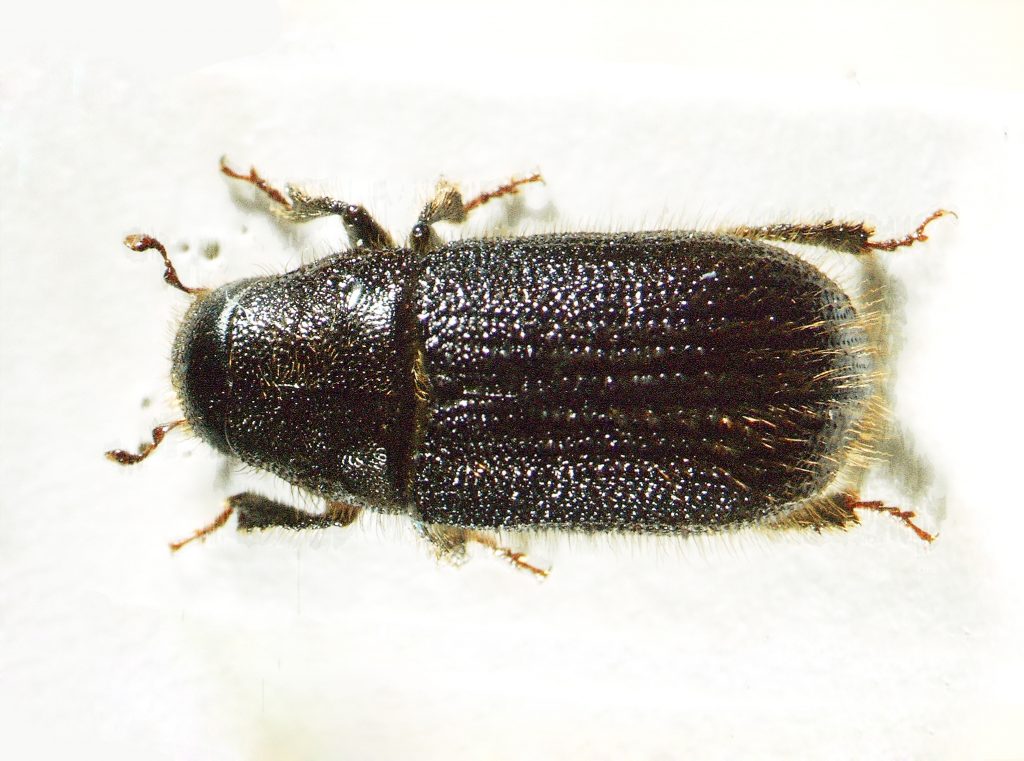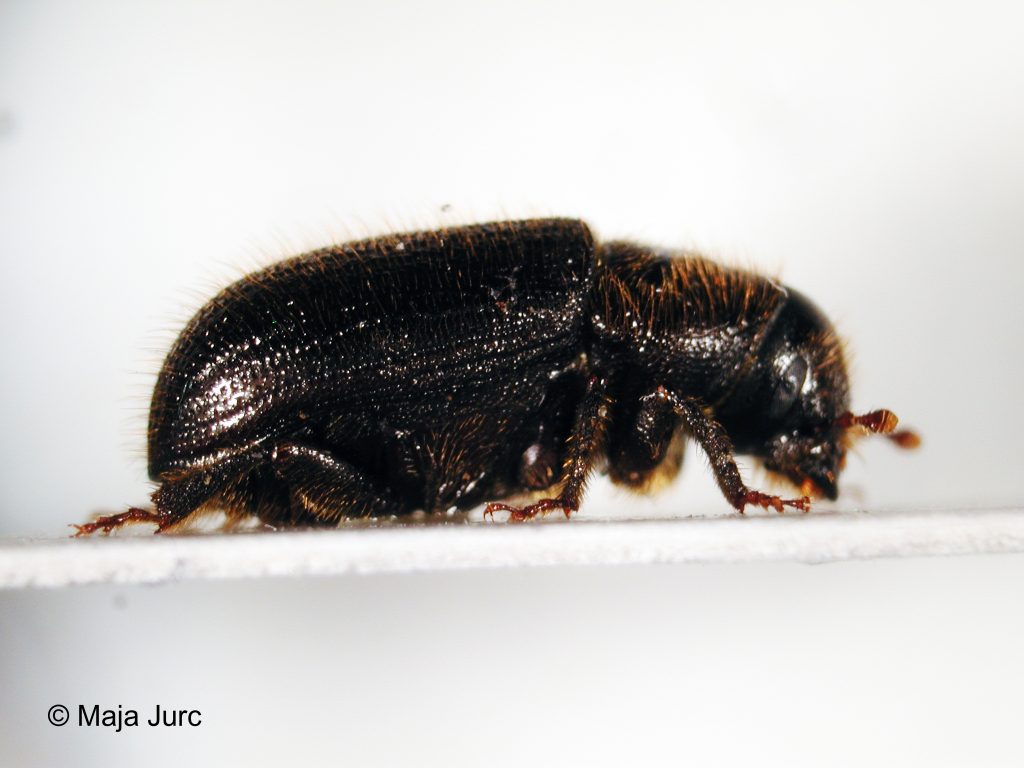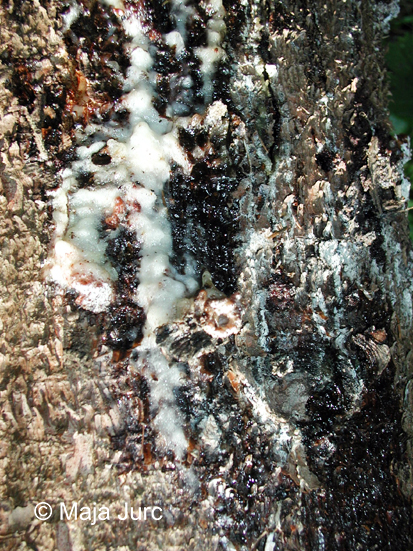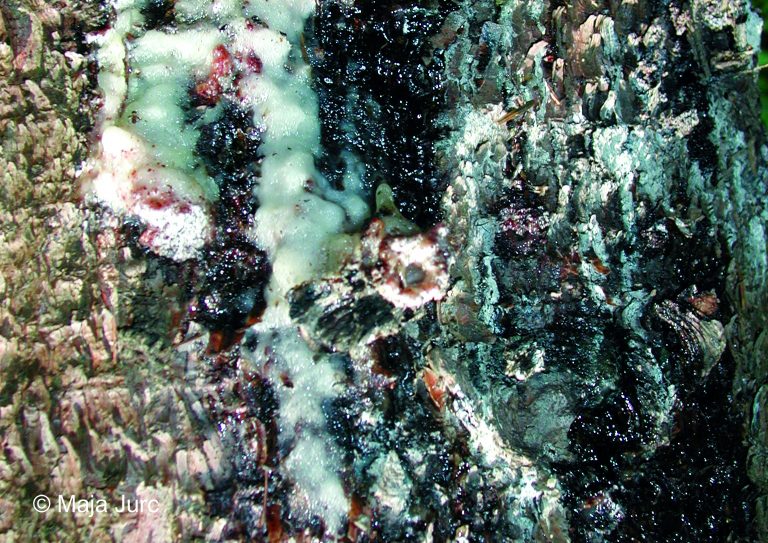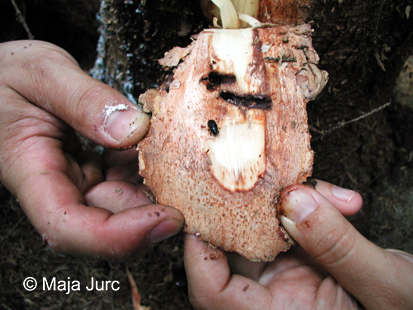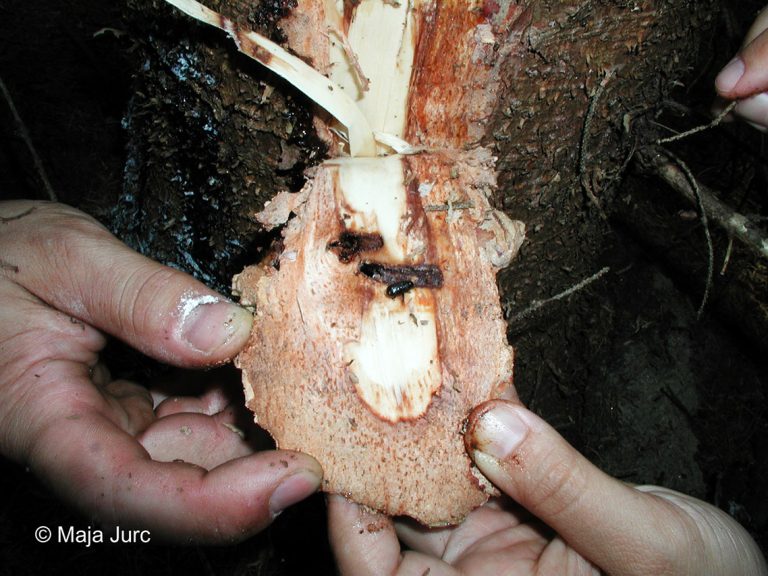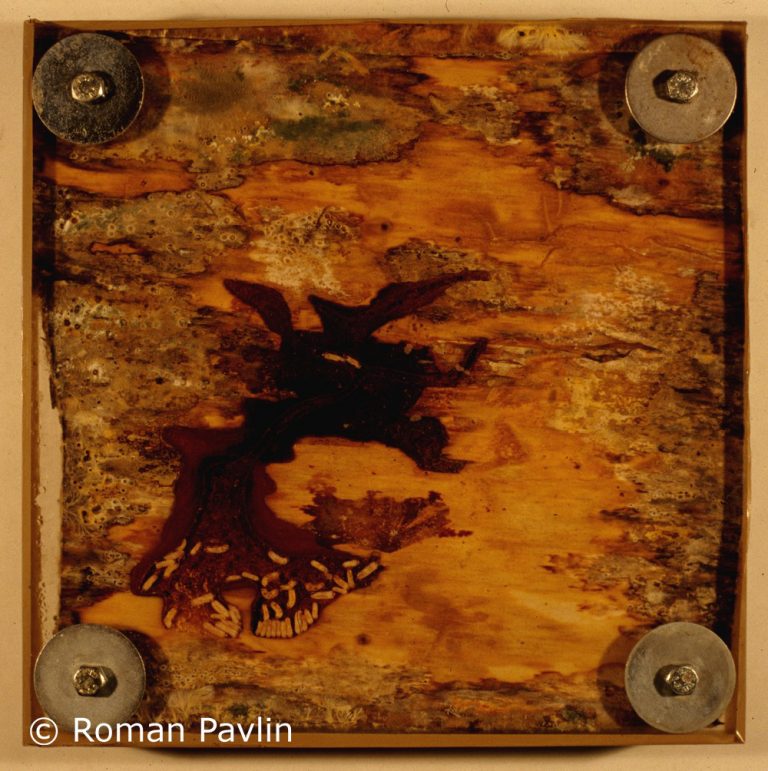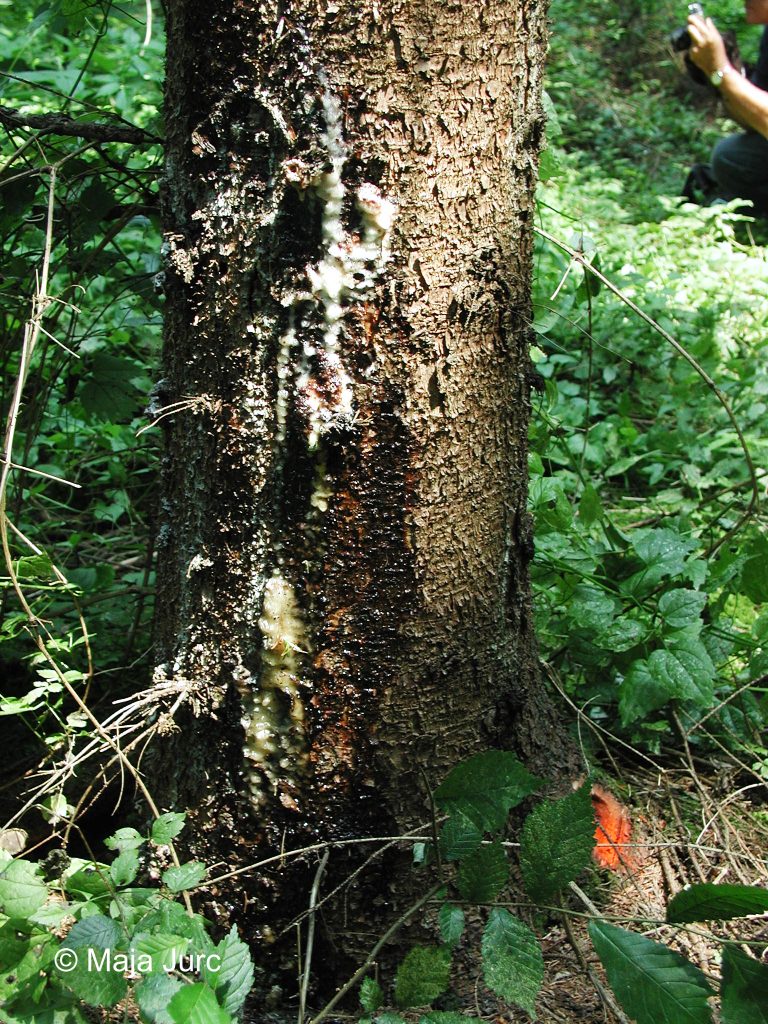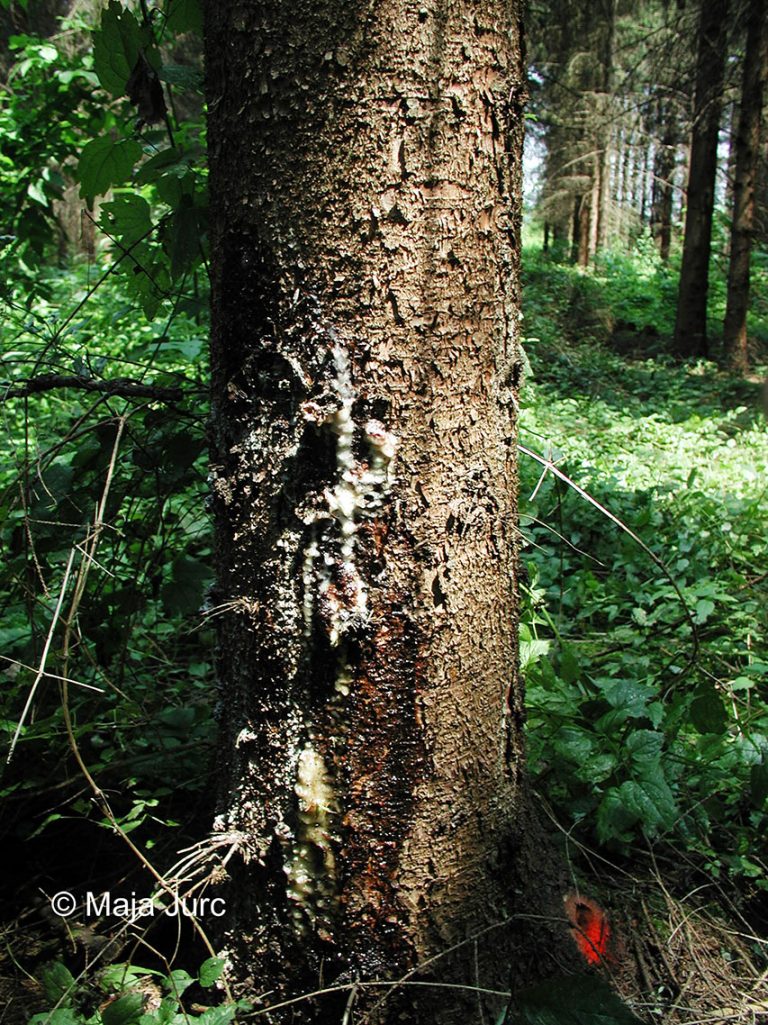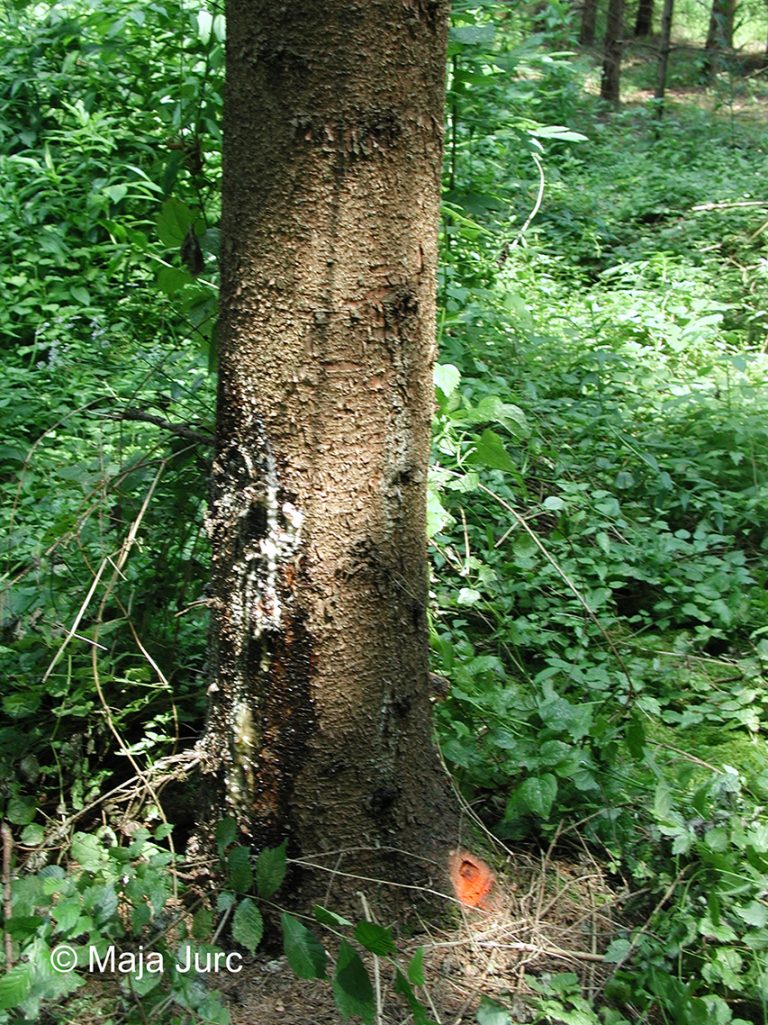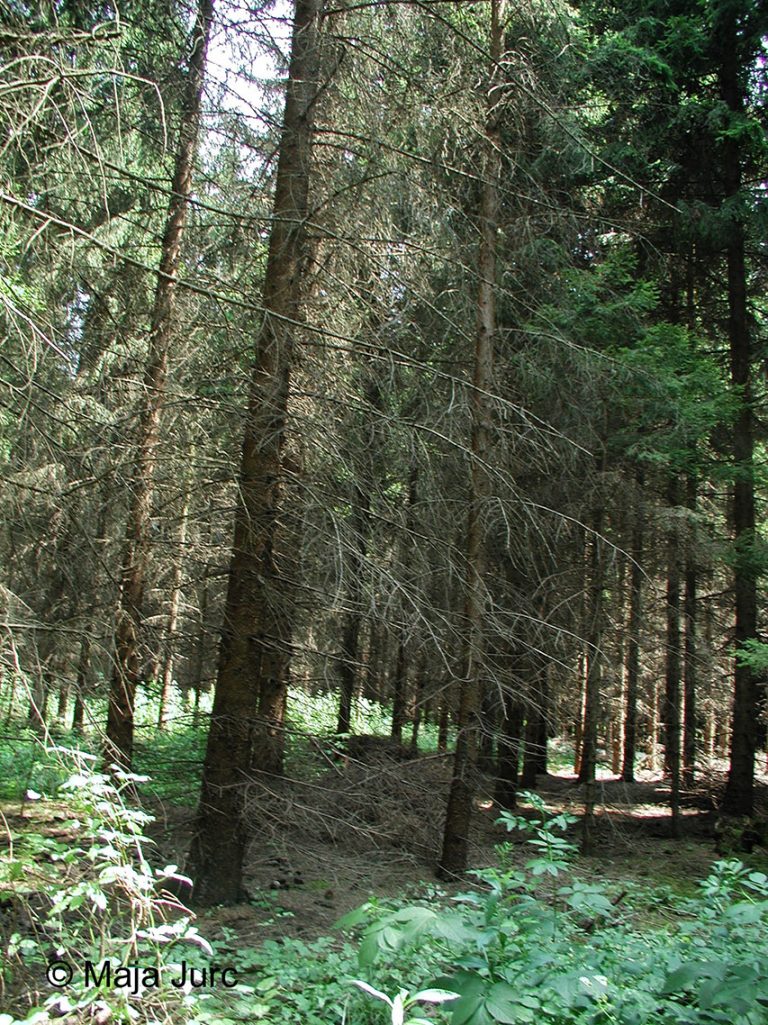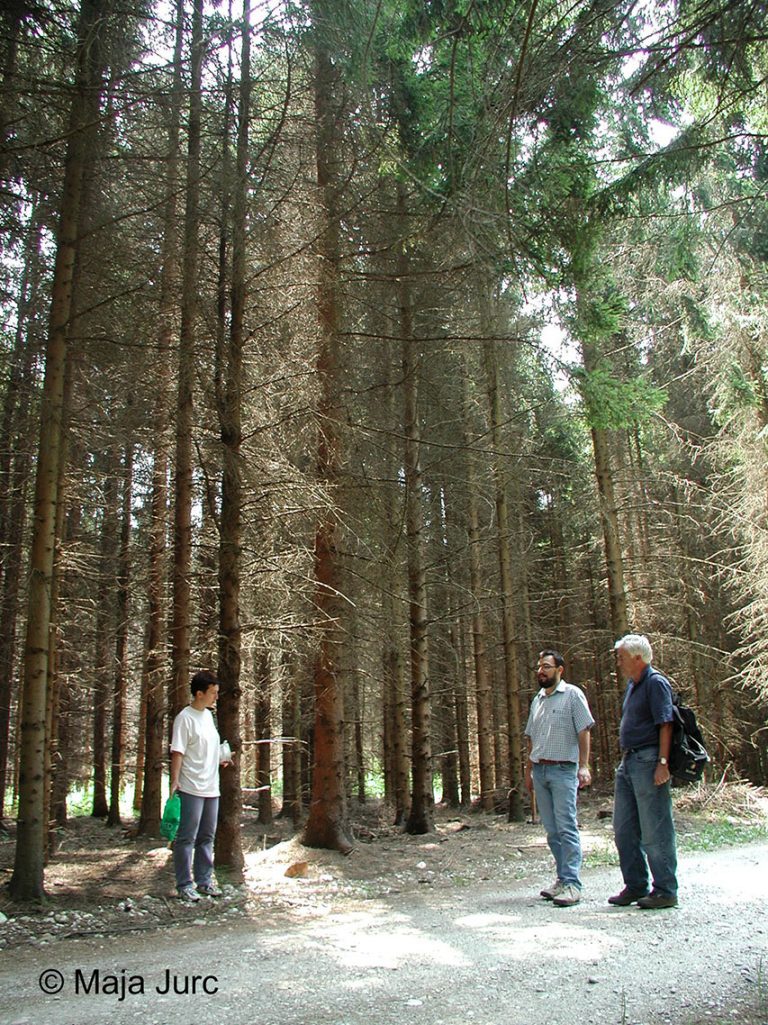07.01. Dendroctonus micans (Kugelann, 1794)
Presence
E: AU BE BU BY CR CT CZ DE EN FI FR GB GE GR HU IT LA LT LU NL NR NT PL SK SL SP SV SZ UK YU
A: ES FE GAN HEI JA JIL KZ LIA MG NMO QIN SCH TR WS XIN XIZ
Figure 36: Dendroctonus micans, dorsal, lateral (Photo: Maja Jurc)
Older catalogs and keys – citations of name
Siegel 1866: Dendroctonus micans Kugl.; Grüne 1979: D. micans (Kugelann, 1794); Freude, Harde, Lohse 1981: D. micans Kugelann; Titovšek 1988: D. micans (Kugelann); Pfeffer & Knížek 1993: D. micans (Kugelann, 1794); Pfeffer 1995: D. micans (Kugelann, 1794); Vega & Hofstetter 2015.
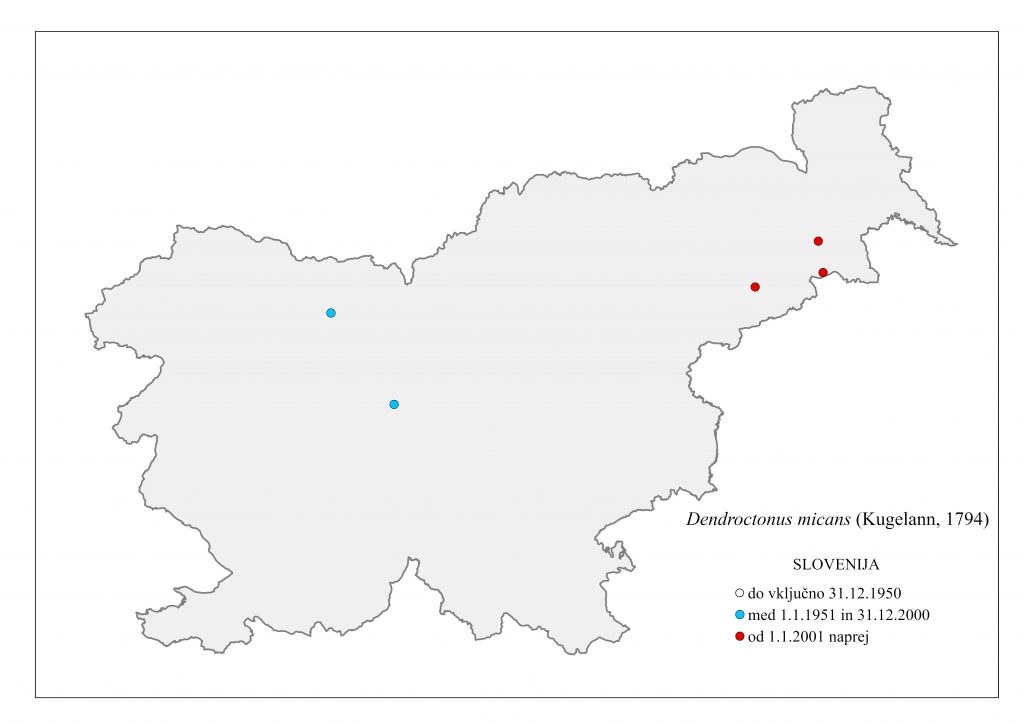
Figure 37: Dendroctonus micans, distribution map according to historical and recent data
Ecology and presence in Slovenia
The species is distributed in north-central Europe, the UK, Ukraine, western Russia and Asia. It occurs in small populations in the southern Alps, spreading into western and southern Europe. Siegel (1866) states that the species was “rare in Carniola, under spruce bark” (Figure 37). Hosts include conifers: Picea abies, Picea spp., less frequently Abies alba, Larix decidua, Pinus sylvestris, Pinus montana, Picea breweriana, Picea omorika, Picea orientalis, Picea engelmanii, Picea sitchensis, Pinus contorta and Pinus mugo. The host species was always P. abies on the few sites in Slovenia. Monogamous species with annual generation, swarming from April to September. The female lays up to 100 eggs in the inner walls of a rounded flat-shaped brood chamber. In the tunnel-less chamber, 6-15 cm big, L1 larvae burrow, arranged in a single line, into a larval gallery which is a continuation of the maternal gallery. In the same tunnel, the adult, sexually immature beetles feed to maturity. D. micans is the largest European bark beetle, with males measuring 6.0-6.5 mm in length and females 7.0-8.0 mm in length (Figure 36). Adults usually colonise the host tree in the lower part of the trunk, especially if there is mechanical damage. Boreholes are clearly identifiable by resin cones. Maternal galleries do not damage the sapwood, so infested trees often survive.

